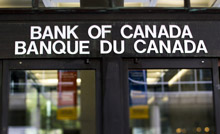
The world’s major central banks are taking coordinated policy action to try and ease strains in money markets today.
The Bank of Canada said Wednesday that it is joining the Bank of England, the Bank of Japan, the European Central Bank, the US Federal Reserve and the Swiss National Bank in announcing coordinated actions to enhance their capacity to provide liquidity to the global financial system. “The purpose of these actions is to ease strains in financial markets and thereby mitigate the effects of such strains on the supply of credit to households and businesses and so help foster economic activity,” they said.
The central banks have agreed to lower the pricing on the existing temporary U.S. dollar liquidity swap arrangements by 50 basis points so that the new rate will be the U.S. dollar overnight index swap rate plus 50 bps, starting December 5. And, the authorization for these swap arrangements has been extended to February 1, 2013.
Additionally, as “a contingency measure” the central banks have also agreed to establish temporary bilateral liquidity swap arrangements, so that liquidity can be provided in each jurisdiction, in any of their currencies, should market conditions so warrant. They note that there is no need to offer liquidity in currencies other than the U.S. dollar at this point, but that they believe it’s prudent to make the necessary arrangements so that liquidity support operations could be put into place quickly should the need arise.These swap lines are also authorized through February 1, 2013.
The Bank of Canada says that the introduction of the expanded network of temporary swap lines will enable it to provide Canadian dollars to the other central banks, and to provide liquidity inJapanese yen, euros, U.K. pounds sterling, Swiss francs and U.S. dollars to financial institutions in Canada, if necessary.
“Should these facilities be drawn on, the details of the liquidity facilities provided would depend on the specific market circumstances at the time,” the bank says.
The Fed said that while U.S. financial institutions currently do not face difficulty obtaining liquidity in short-term funding markets, if conditions deteriorate, it has a range of tools available “to provide an effective liquidity backstop for such institutions and is prepared to use these tools as needed to support financial stability and to promote the extension of credit to U.S. households and businesses.”